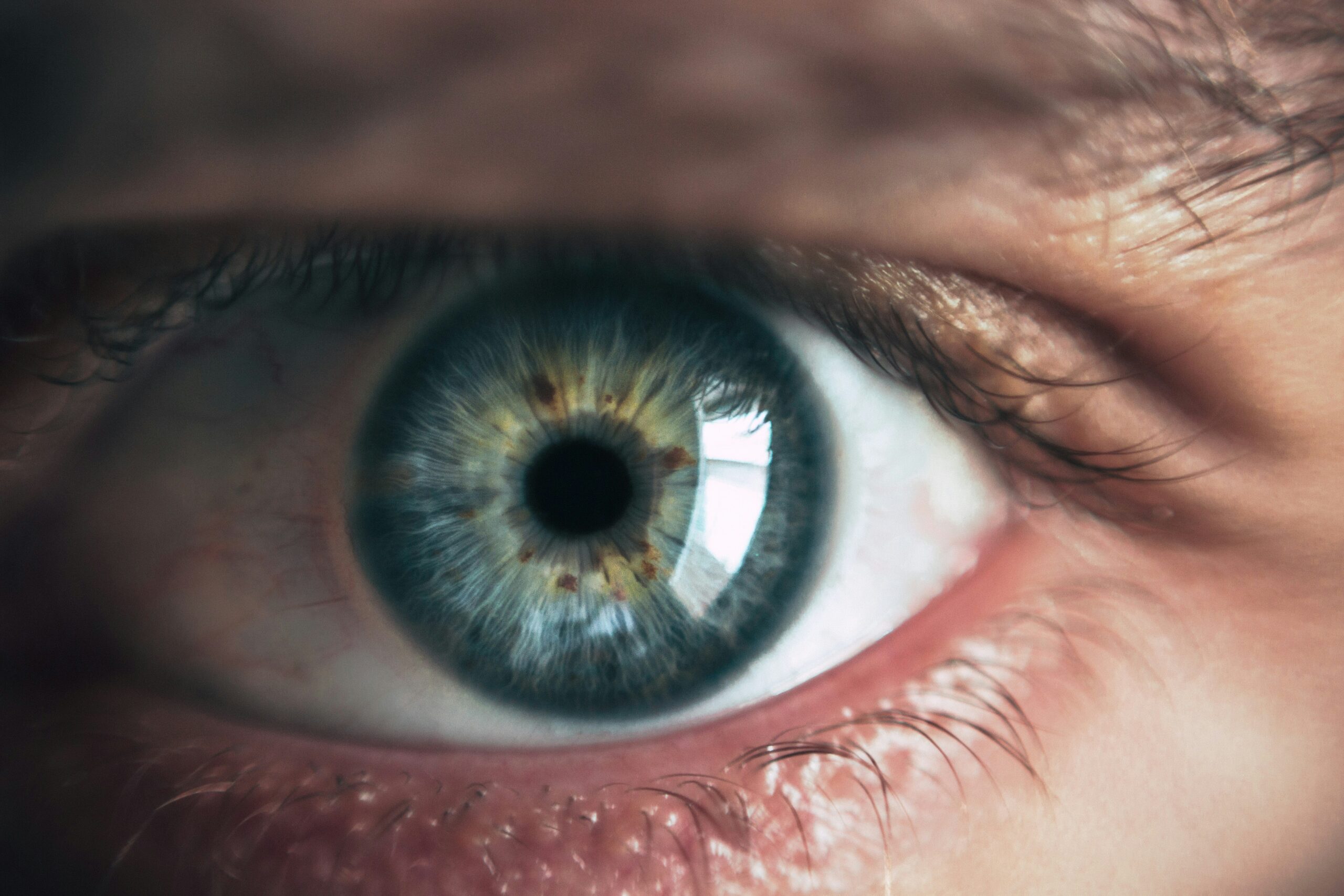Glaucomas constitute a group of eye disorders characterized by progressive damage to the optic nerve, often associated with increased intraocular pressure (IOP), leading to irreversible vision loss. Glaucoma can develop slowly, and the gradual vision loss may go unnoticed for an extended period. Regular eye examinations, including pressure measurement and peripheral vision testing, are essential for at-risk people.
Glaucoma affects almost 64 million worldwide, ranking as the second most common cause of blindness globally. It is particularly prevalent among individuals over 60, with only half of those affected being aware of their condition
Despite pharmacological interventions aiming to alleviate IOP, the quest for effective and well-tolerated treatments persists.
To explore the potential advantages of Medical Cannabis for individuals dealing with glaucoma, we embark on a journey through the pages of the “Handbook Principle of Cannabinology,” by Viola Brugnatelli and Fabio Turco. This handbook serves as a guide for European healthcare professionals and enthusiasts seeking a profound understanding of the medical applications of cannabis in Europe.
Glaucoma
Glaucoma comes from the Greek word gláukōma, derived from glaukós, meaning ‘glaucous, cerulean, celestial’ because the affected eye appears opaque blue tending to grey.
In medicine, this term denotes a group of heterogeneous diseases characterized by increased intraocular pressure (IOP).
The association between elevated IOP and the onset of glaucoma was first described in 1622 by the English physician Richard Banister, who in his ‘Treatise of One Hundred and Thirteen Diseases of the Eyes and Eyelids’ stated: the eye becomes firmer and harder than it should be in nature.
The two main types of glaucoma are:
- Open-angle glaucoma, which is more prevalent and involves the gradual accumulation of microscopic deposits in the eye’s drainage canals over time, leading to a slow increase in eye pressure. Although not visibly blocked under magnification, the canals do not drain adequately.
- Closed-angle glaucoma, which occurs when drainage canals are blocked or covered due to a narrow angle between the iris and cornea. This type can manifest suddenly (acute closed-angle glaucoma) or progress slowly (chronic closed-angle glaucoma). In acute cases, eye pressure rises rapidly, while in chronic cases, the pressure increases gradually, similar to open-angle glaucoma. The blockage in closed-angle glaucoma is visibly apparent.
Traditionally, anti-glaucoma treatments focus on reducing IOP, employing drugs like:
- pilocarpine,
- beta-blockers,
- prostaglandin F2A analogues.
When pharmaceutical interventions fall short, surgical options become viable, albeit with potential complications.
Cannabis and Glaucoma: A History of Activism
The first reports on the use of cannabis to lower IOP date back to 1971. Since then, the plant has achieved an almost mythical status as a miracle drug for glaucoma. Moreover, it was thanks to glaucoma (or rather, the possibility of being able to treat it) that the Medical Cannabis revolution began in 1974.
In that year, Robert C. Randall, a glaucoma patient, discovered that smoking cannabis relieved his symptoms. Despite legal issues arising from growing cannabis at home, Randall presented evidence in court, leading to the dismissal of charges in 1976. He became the first legal user of medical cannabis. Randall’s advocacy prompted the establishment of the Marijuana Research Project in 1974, the first state-run Medical Cannabis cultivation program in the US, supplying cannabis to patients until 1992. Randall, a prominent cannabis legalization activist, founded the Alliance for Cannabis Therapeutics and played a key role in a 1987 lawsuit, resulting in a groundbreaking ruling. The decision, which was later ignored by officials of the Drug Enforcement Administration (DEA, the US anti-drug agency), was written by the agency’s chief administrative judge, who wrote that cannabis was “one of the safest therapeutically active substances known to mankind”.
Despite the ruling being later disregarded, Randall’s contributions significantly impacted the medical cannabis movement. He passed away in 2001.
Cannabis and Cannabinoids in Glaucoma
Cannabis and cannabinoids are effective in treating glaucoma for two main reasons:
- they lower IOP by interacting with CB1 receptors,
- they modulate prostanoid synthesis through the cyclooxygenase (COX) pathway, influencing various ocular structures.
Additionally, cannabinoids exert a neuroprotective effect, safeguarding retinal ganglion cells (RGCs) through inhibiting glutamate, endothelin-1, and nitric oxide release.
Clinical studies demonstrate that cannabinoids, especially tetrahydrocannabinol (THC), effectively reduce IOP and slow glaucoma progression. THC shows positive results when administered systemically (orally, intravenously, or through inhalation), but not when applied as eye drops due to its poor solubility in an aqueous environment. New formulations, like those with cyclodextrins, aim to address this issue.
Inhaled or orally consumed cannabis, THC, synthetic cannabinoids in pill form, and intravenous injections of natural cannabinoids reduce IOP significantly, lasting approximately three to four hours.
However, the short duration of action and potential side effects limit their use. Combining THC with cannabidiol (CBD) can mitigate side effects although CBD alone has a modest IOP-reducing effect with some ocular toxicity.
There are also other cannabinoids that may be useful in glaucoma:
- Cannabigerol (CBG) reduces IOP without significant toxicity;
- Palmitoylethanolamine (PEA), administered orally, is also effective in reducing IOP and intraocular vasodilation without notable side effects.
Therapy ‘Tailored’ to the Patient: Considerations of a Prescriber
There are controversy surrounding the use of cannabinoids in treating glaucoma, because of a lack of conclusive evidence, the absence of randomized controlled trials and the predominantly dated nature of the cited manuscripts from the 1970s and early 1980s. Dr. Lorenzo Calvi, an Italian Anaesthesiologist and Ethnopharmacologist, challenges these conclusions based on his practical experience, treating approximately 150-160 glaucoma patients. He asserts an exceptional success rate of 98%, emphasizing the minimal amount of cannabinoids needed and the absence of psychotic side effects.
Dr. Calvi underscores the importance of personalized therapy tailored to each patient, respecting the natural synergy between cannabinoids and terpenes for an effective and clinically safe outcome. He suggests that the positive results observed in glaucoma treatment with cannabis can apply to other diseases, advocating for a collaborative effort among doctors, patients, and pharmacists to ensure the success of cannabinoid therapies.
Concluding remarks
Despite debates on the scientific evidence surrounding cannabis and glaucoma, clinical practice, as highlighted by Dr. Lorenzo Calvi, paints a compelling picture. The therapeutic efficacy of cannabinoids, especially in cases resistant to conventional treatments, makes them a valuable alternative. Challenges such as lipophilicity and central side effects are acknowledged, yet the efficacy of Cannabis Medica in glaucoma remains a beacon of hope.
In conclusion, the story of cannabis and glaucoma spans decades, marked by historical activism, legal milestones, and ongoing research.
Want to learn more?
The information in this article is derived from the handbook “Principles of Clinical Cannabinology“, an invaluable guide for healthcare professionals and enthusiasts alike.
The handbook “Principles of Clinical Cannabinology, co-authored by Cannabiscientia SA and Prohibition Partners, serves as a comprehensive resource, offering insights into the science, regulations, medicine, and diverse products available in the European cannabis landscape.

 News6 months ago
News6 months ago
 Science5 months ago
Science5 months ago
 Industry6 months ago
Industry6 months ago
 News6 months ago
News6 months ago
 News5 months ago
News5 months ago
 Health5 months ago
Health5 months ago
 News5 months ago
News5 months ago
 Health3 months ago
Health3 months ago
